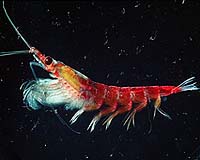| . |  |
. |
San Francisco CA (SPX) Aug 12, 2009 Stories of ships mysteriously sent to watery graves by sudden, giant waves have long puzzled scientists and sailors. New research by San Francisco State professor Tim Janssen suggests that changes in water depth and currents, which are common in coastal areas, may significantly increase the likelihood of these extreme waves. Published in the Journal of Physical Oceanography, Janssen's wave model simulations show that focusing of waves by shoals and currents could increase the likelihood of a freak wave by as much as 10 times. Although scientists cannot predict the occurrence of individual extreme waves, Janssen's findings help pinpoint conditions and locations favorable for giant waves. Extreme waves, also known as "freak" or "rogue" waves, measure roughly three times the size of the average wave height of a given sea state. Recorded monster waves have exceeded 60-feet - the approximate size of a six-story building. Janssen's research suggests that in areas where wave energy is focused, the probability of freak-waves is much greater than previously believed. Wave focal zones are particularly common in coastal areas where water depth variations and strong currents can result in dramatic focusing of wave energy. Such effects are particularly well known around river mouths and coastal inlets, restricting accessibility for shipping due to large, breaking waves near the inlet, or resulting in erosion issues at nearby beaches. Extreme examples of wave focusing over coastal topography include world-class surf spots, such as Mavericks and Cortez Banks in California. The identification of freak wave hot spots is also important for shipping and navigation in coastal areas, and the design of offshore structures. "In a normal wave field, on average, roughly three waves in every 10,000 are extreme waves," Janssen said. "In a focal zone, this number could increase to about three in every 1,000 waves. In a focal zone, the average wave height is already increased due to the focusing of energy so that an extreme wave in such a high energy area can potentially be very energetic and dangerous." Janssen's wave simulations estimated the evolution of waves in open oceans, waves interacting with an opposing current, and waves traveling over a topographical feature such as a reef. The simulations show that freely developing waves maintain normal statistical properties with a small likelihood of extremes. But when the waves are focused by variations in water depth or currents, the rapid increase in energy drives wave interactions that enhance the likelihood of extreme waves. "We found that if the focusing is sufficiently strong and abrupt, wave interactions create conditions favorable to extreme waves," Janssen said. "When we gradually increase the focal strength, initially wave interactions are weak and statistics remain normal. However, when increasing the focal strength beyond a certain threshold, suddenly wave interactions are enhanced and freak waves are much more likely than normal. It appears that wherever waves undergo a rapid transformation, freak waves can be much more likely than we would otherwise expect." Share This Article With Planet Earth
Related Links San Francisco State University Water News - Science, Technology and Politics
 Tiny Sea Creatures Linked To Large-Scale Ocean Mixing
Tiny Sea Creatures Linked To Large-Scale Ocean MixingPasadena CA (SPX) Aug 03, 2009 Using a combination of theoretical modeling, energy calculations, and field observations, researchers from the California Institute of Technology (Caltech) have for the first time described a mechanism that explains how some of the ocean's tiniest swimming animals can have a huge impact on large-scale ocean mixing. "We've been studying swimming animals for quite some time," says John ... read more |
|
| The content herein, unless otherwise known to be public domain, are Copyright 1995-2009 - SpaceDaily. AFP and UPI Wire Stories are copyright Agence France-Presse and United Press International. ESA Portal Reports are copyright European Space Agency. All NASA sourced material is public domain. Additional copyrights may apply in whole or part to other bona fide parties. Advertising does not imply endorsement,agreement or approval of any opinions, statements or information provided by SpaceDaily on any Web page published or hosted by SpaceDaily. Privacy Statement |